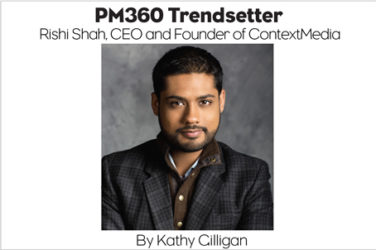Healthcare and pharma have experienced unprecedented changes in the past year. Hospital and practice volumes have fluctuated dramatically. Remote patient care has skyrocketed. In-person conferences are nonexistent. Interactions with pharma sales representatives fell significantly. Faced with this tumultuous environment, how can you effectively educate healthcare professionals (HCPs) about new and existing treatments?
To engage HCPs and deliver information effectively, you need to understand their behavior patterns, current needs, and changing expectations. Last year, I shared detailed insights on the digital habits of HCPs. In this article, I share what comes next: How to deliver information effectively and create an educational ecosystem across those channels.
In light of the COVID-19 pandemic, HCPs continue to face unprecedented burdens, from changes in their ability to care for patients to personal upheaval. Of HCPs in a McKinsey survey, 55% reported that although COVID-19 has increased their feelings of burnout, they continue to prioritize research and education that can improve their clinical practice and patient care.
In multiple surveys, more than half of physicians reported that since the beginning of the pandemic, they have more time to consume medical information online—likely due to decreased patient volume and restrictions on in-person interactions, as well as other factors. Throughout 2020, providers continually reported that education is what they need most.
Although digital communication programs offer new opportunities, they do not automatically translate into direct channels for pharma-provider engagement. On top of dramatic industry stresses, physicians are dealing with “Zoom fatigue” and overflowing email inboxes. According to an Accenture survey of more than 700 HCPs, 58% agreed that at least one pharma company has “spammed” them with digital content during the pandemic, and 57% felt that pharma doesn’t fully understand how COVID-19 is impacting them or their patients. Keeping this in mind, it is essential that we deliver relevant and empathetic information to our audience on channels they are already using.
On a positive note, four of five HCPs in the Accenture survey recognized that pharma companies are changing what they communicate about, and HCPs still value and want education from pharma. HCPs increasingly seek on-demand educational content they can access on their own time. We live in a world of on-demand TV content and food delivery. We are growing more accustomed to getting information when and where we want it, particularly when live events are not an option. One of the primary reasons physicians attended live, in-person events was to create and strengthen relationships by talking to colleagues one-on-one…or over a free meal. Virtual events should strive to offer these same connections through dedicated question-and-answer sessions or by fostering conversation.
A “Surround-Sound” Educational Ecosystem Model
Using a “surround-sound” approach to education can help you better deliver information, engage HCPs, and ensure they retain information in this noisy virtual world. An invaluable strategy is to develop an educational model based around a central hub of content, which is supplemented by off-hub communications that are delivered across the channels where your audience goes for information.
Hubs are an effective way to deliver information that educates about your brand or disease to create value for physicians. Hubs may be branded, disease management, or disease state education sites. These often are open, virtual hubs. Alternatively, some companies find that creating closed, access-restricted educational hubs fosters a stronger sense of value for HCPs.
What do you include on this hub? Right now, you must share COVID-19-related content in your therapeutic area because physicians want information that supports their clinical practice. This objective will be true long after the pandemic ends—whether that information is related to novel science, disease state education, your brand specifically, or patient support information, your goal is to help HCPs deliver better care.
No matter where physicians are in their learning continuum, they can find value in a repository of educational information. Examples include patient materials, resource guides, education on the science behind a drug or disease, drug delivery, or any new element about your products, all of which can support HCPs new to your brand or disease, as well as current writers.
Omnichannel Content Delivery to HCPs
However, your audience is probably not aware of your hub. As such, you need to create interest and start them on their learning path by hooking them at a place they already find valuable and with content aligned to their pain points to drive engagement. Where do your target specialists spend time? Once you understand their channel and format preferences, you can deliver omnichannel messaging on the channels they are already using.
Reinforce more in-depth content with short, micro-moment chunks. No matter how complex your message, elements can still be broken down into short concepts for quick-hit, attention-grabbing delivery. Omnichannel delivery of this message throughout an HCP’s digital path helps reinforce your message to foster recall and retention, and this can drive your audience back to your hub.
Different platforms offer different opportunities to deliver this content. This might be a patient case that can educate HCPs on something new, a quiz that communicates something factual or challenges current perceptions, a related article that elevates new data, or a variety of other formats (depending on your objective & HCPs content needs).
You can also carefully develop and enhance the visual impact of content to offset information overload. Effective visuals communicate clearly and quickly (in as little as 13 milliseconds, according to MIT), and can increase comprehension and spark emotion.
Create a scientific identity, also known as branded science, that connects all elements of your campaign and links back to your educational hub. The visuals in your hub may be less complex or long form such as videos or audio, whereas off-hub designs need to be able to catch a busy HCP’s eyes. Consistent imagery will foster recognition and create brand equity that you can continue to build over time.
Take advantage of visual principles and tools such as infographics that promote rapid comprehension. Use AI-enabled tools that simulate a viewer’s sight and analyze whether their attention is drawn to the elements you most want emphasized. When you understand what holds a provider’s attention, you can adjust designs to ensure that your communication goals are met.
Spaced Repetition and Measurement to Drive ROI
Additionally, adult learning principles reveal that because adults learn in different ways, they need information repeated to truly understand and remember it. To foster recall and retention, deliver your message through multiple modes (audio, video, interactive content, etc.) spaced over time. Developing and presenting content in multiple formats aligns with the medical school practice of see one, do one, and teach one.
Spaced repetition of content reinforces your educational message. To put this into practice, consider the length of the campaign and any seasonality factors. Space out messaging in a sequential pattern that tells a logical story. You can execute this spaced messaging in both manual and automated processes. For example, an email campaign may work based on triggers, releasing subsequent messages after the physician interacts with each.
Be conscious of the message and how it should evolve over time across the campaign. Repetition is important for retention, so repetition of key messages should be incorporated to ensure that HCPs remember the information.
This is all important to build an educational ecosystem, but if you’re not measuring throughout you can’t optimize the campaign or demonstrate ROI. Although education is the first priority, you also need to drive behavior change. Go beyond just event metrics to understand other shifts—from how knowledge evolves to shifts in intent to changes in diagnosis or prescriptions. As you develop your campaign, identify KPIs that follow along the learning curve to ensure that attitudes and behaviors ultimately change.
Even during the COVID-19 era, physicians want education from pharma. Driving your audience to a central resource repository through omnichannel messaging creates an educational ecosystem that meets HCP needs and fosters trust in your brand through relevant, valuable content—both in the midst of a turbulent time and beyond.
Data Sources: McKinsey & Co., Accenture, Healio Strategic Solutions, Sermo, MIT.








